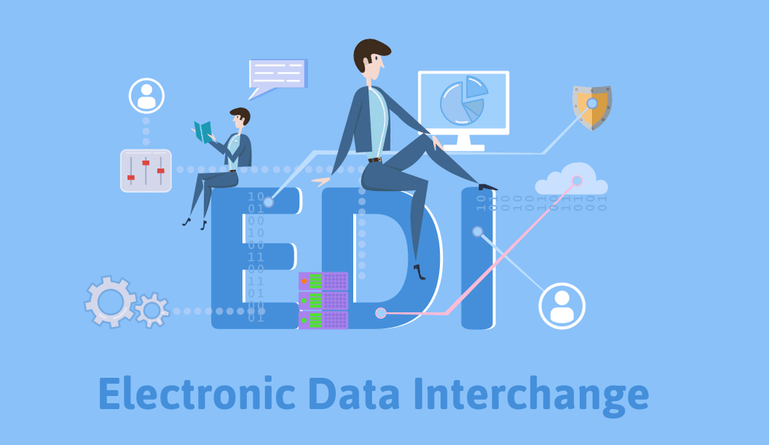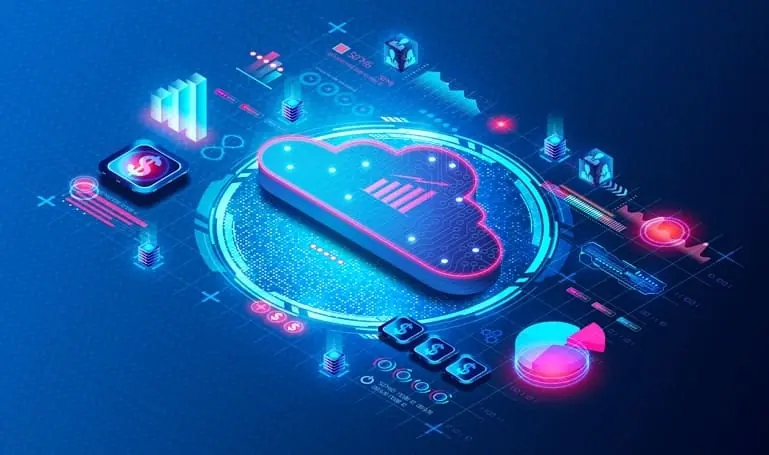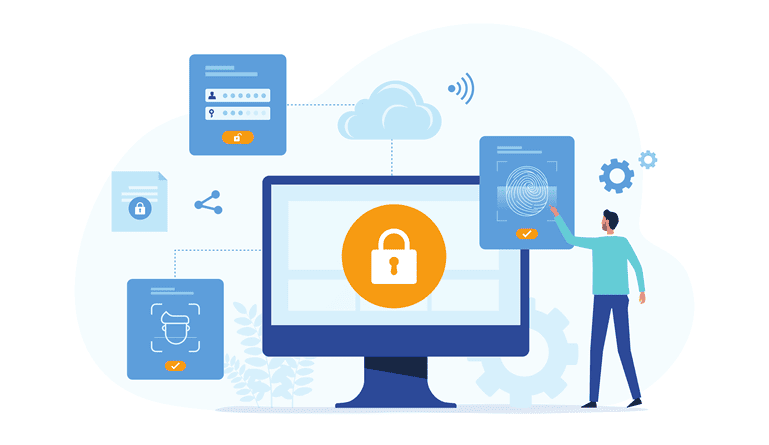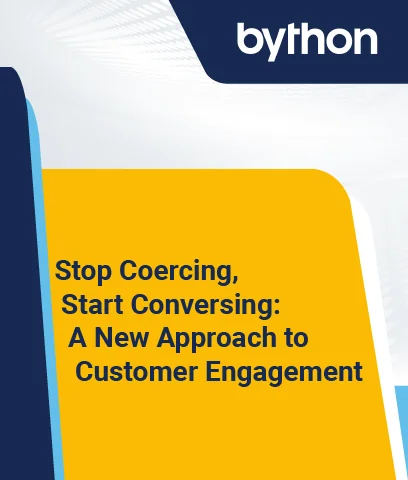For close to 20 years, Electronic Data Interchange (EDI) is considered to be a technology that is critical to supply chain management in enterprises delivering benefits across enterprises at multiple levels. Electronic Data Interchange allows organizations to exchange mission-critical information around purchase orders, invoices, booking requests, and so on. Electronic Data Interchange is nothing but a series of rules that allow businesses to communicate with each other. Under the EDI umbrella, we are looking at the exchange of emails, notes, and documents, which is efficiently supported by software to read and interpret this information.
Electronic Data Interchange consists of the same information that would have been exchanged over the paper. However, in this case, there is a seamless integration between two business systems so that the same paper-based information can be exchanged electronically.
How EDI Works?
A key way EDI operates is by replacing older processes, which are manual in nature, such as mail, fax o even standard emails, by implementing business systems that can easily exchange such information in an electronic format.
In this method, there is a translator that initially converts the application data between two transacting trading partners or entities. These are organizations, separate ones, that are involved in a business transaction. A classic example of such a transaction is between an OEM company and a manufacturer and a buyer. Having EDI implemented shortens the cycle time to process such orders or transactions, considerably.
Benefits of EDI
Electronic Data Interchange is not a new technology. There have been instances where EDI has been implemented even in legacy systems, as early as the 1960s. Here are some of the benefits, which substantiate the fact that Electronic Data Interchange is a very effective means of collaboration and communication.
-
Reduce operating costs
It is estimated that the operating costs of enterprises reduce by around 35% after they implement EDI. This is primarily due to the reduction or elimination of paper, printing, storage, filing, and other such areas, which had overheads. Moreover, it also brings down a considerable reduction in maintenance expenses and administrative resource utilizations.
-
Enhance business cycle time
A very key element for the order processing is time. Having a manual process for information exchange can consume a lot of time to execute the transaction. With Electronic Data Interchange, it is estimated that the cycle time improves by 61%, mainly due to the automation protocols that are set up at the time of implementation.
-
Improve data accuracy
Having Electronic Data Interchange implemented reduces any sort of errors because there is very little manual intervention in such transactions. This improves the overall quality of the data that is captured, reducing errors by a staggering 30% to 40%.
-
Environment Friendly
Since Electronic Data Interchange operates in a paperless environment, it is completely environment friendly, bringing about a drastic reduction in CO2 emission.
-
Improve Business Efficiency
A direct impact of the reduction in human intervention results in improved performance of the business overall, creating a significant rise in the efficiency of the organization across the board. EDI also enhances relationships with trading partners such as suppliers, customers, distributors, due to faster delivery of goods and services.
Disadvantages of EDI
While we are looking at some of the benefits of having EDI being implemented, one can not let go of the limitations or disadvantages of EDI. Let us look at some of the important disadvantages that organizations must take into consideration.
-
Initial setup
While having EDI sounds all hunky-dory, but the initial setup of EDI (excluding the latest WebEDI) is a time-consuming process.
-
Standards to be followed
EDI comes with a whole bunch of industry standards that organizations need to adhere to. This can pose as a challenge because resources need to be deployed to ensure that the company achieves those standards. Some of these standards include UN/EDIFACT, ANSI ASC X12, GS1 EDI, TRADACOMS, and HL7.
-
Strong backup systems
It is not just about implementing EDI, but also about maintaining it. Having such a vast technology requires robust backup systems and organizations need resources who can perform this task.
EDI Implementation
Implementation of EDI is nothing but the process by which the EDI software will be deployed in the organization, which is in line with the goal or objective defined. While implementing EDI there are certain guidelines that you need to follow. Here are 3 important guidelines for your reference.
-
Decision on who does EDI Implementation
While you are new to this EDI framework, there will not be any expert within the organization who can implement EDI, particularly for small and medium enterprises. Hence, it is important to have a consensus on deciding who will be the implementation partner for you. Choices are plenty, but you need to do a proper due diligence before selecting the right partner.
-
Deploy a third-party consultant
To have a successful EDI implementation done, it is better to hire a third-party consultant. This person will help you in defining the roadmap of your EDI implementation journey and help you in selecting the right software vendor.
-
Work with your Software Vendor
After you have selected the software vendor for your EDI implementation, it is important to work with the vendor and not just leave everything to them. This way, you can create an in-house EDI Champion who can then spearhead the project.
Following these guidelines can ensure a smooth implementation of your EDI project.
Future of EDI
One thing that is constant about the future of EDI is the uncertainty prevailing, despite this being an age-old technology. EDI has been in existence for decades and still is the most preferred technology among enterprises, however, many agencies have actually forecasted a potential end to the technology. This could be true because in 2021, we have seen alternate technology options sprouting up and organizations are exploring options, particularly in the supply chain segment. There are few takeaways that we can look at when it comes to the future of EDI, based on the opinions of experts
- Large enterprises are planning to set up an in-house competency for processing EDI
- Because of new technologies, small and medium enterprises constantly face a challenge to deal with this dynamic scenario
- It is estimated that 95% of EDI implementations are tailor-made, which means that these require heavy investment in maintenance in the form of cost and resources
- There are around 41% of companies that have not implemented EDI yet
EDI Case studies
These case studies are examples of companies that have implemented electronic data interchange and it will give you an insight on the various routes taken by these companies to successfully deploy EDI.
-
Nichirin U K Limited
A subsidiary of the Japanese conglomerate Nichirin Group, the company manufactures and distributes various automotive hoses to vehicle manufacturers in the U.K.
Challenge
- There was a mandate driven by customer expectation to implement EDI to safeguard business relationships and also protect the revenue.
- There was a requirement to set up a packing label that was supposed to match the dispatch advice
- EDI and labeling was a pre-requisite for getting an award for quality standard
Nichirin implemented the product OpenText Freeway Professional to address the above-mentioned challenges.
Value/Benefits
- The vendor had the knowledge of specific scenarios (in this case trading partner message formats), which enabled quicker deployment
- Achieved compliance of ODETTE compliant labeling
- The vendor also helped Nichirin achieve the JLRQ quality standard
- Key attributes of the system deployed by OpenText were flexibility and ease-of-use
-
Dixons Carphone
It is a multinational company that sells electronic and telecommunication products, having its headquarter in London.
Challenge
- On-boarding of new suppliers was taking a long time
- As the organization was growing, there was a pertinent requirement of electronic trading and automated the process
The product implemented by Dixons Carphone was OpenText Trading Grid Messaging Service.
Value/Benefits
- Reduction in on-boarding process timeline from weeks to days
- A solution that is completely scalable and secure
- Delivered better visibility of stock levels and response time also improved
EDI Resources
In this segment, we will be showcasing some key resources and supporting material, that will help organizations to decide upon the right EDI solution. These resources comprise FAQs, an exhaustive list of glossary of important terms, and many more.
-
Reference Downloads
This consists of white papers that help organizations to get further insights into EDI. For more details, you can click here
-
Tutorials
Here you can download tutorials around XML, EDIFACT, and ANSI. For more insights into these tutorials, click here.
-
Sample RFP
These samples will help you get an idea of how you can define the requirements. These RFPs will serve a guideline as it consists of requirements and evaluation criteria. You can click here to access the sample.
These are a few of the resource materials to help any organization that wants to know details about starting an EDI project.
Examples of EDI
The primary reason for implementing EDI is to speed up business transactions. Some of the examples of EDI are EDI 850, which is purchase orders, EDI 214, which is shipping status, and EDI 820, which is more around invoices, customer information, and payment confirmations.
Final Thoughts
In spite of the fact that EDI is an old technology, organizations still prefer to implement this and it is still considered to be a preferred solution in the B2B space. While EDI methodology has not changed much, but the systems and tools used to perform this action have undergone a paradigm shift, with many systems now available on Cloud, making it flexible, cheaper, easier to deploy, and easier to use; needless to say, it comes with a plethora of features.
For organizations, it is important to consider both benefits and limitations before they go ahead with implementing EDI. However, they also need to ensure that the service provider who is implementing EDI has strong credentials and can help you grow your business.







